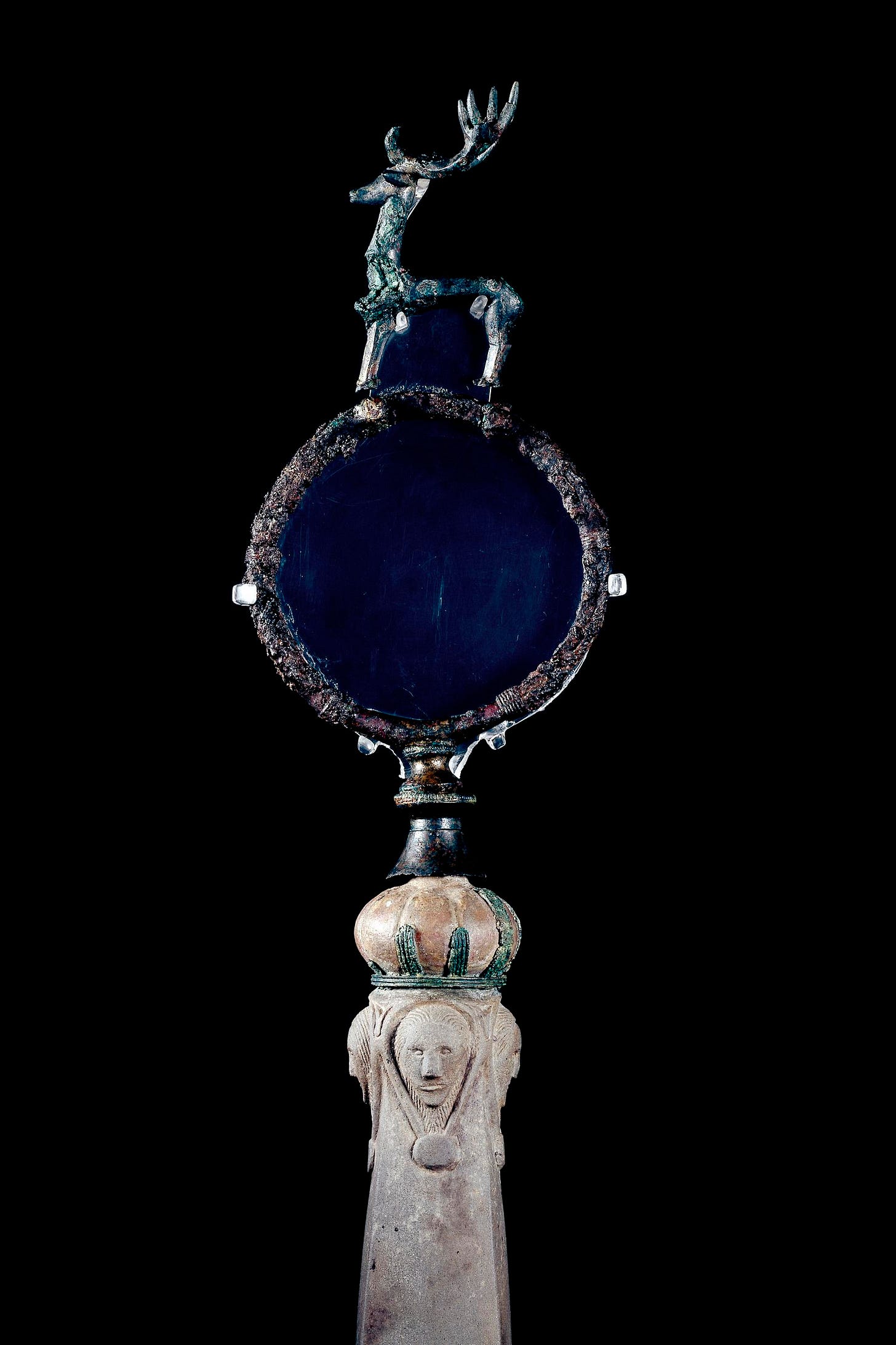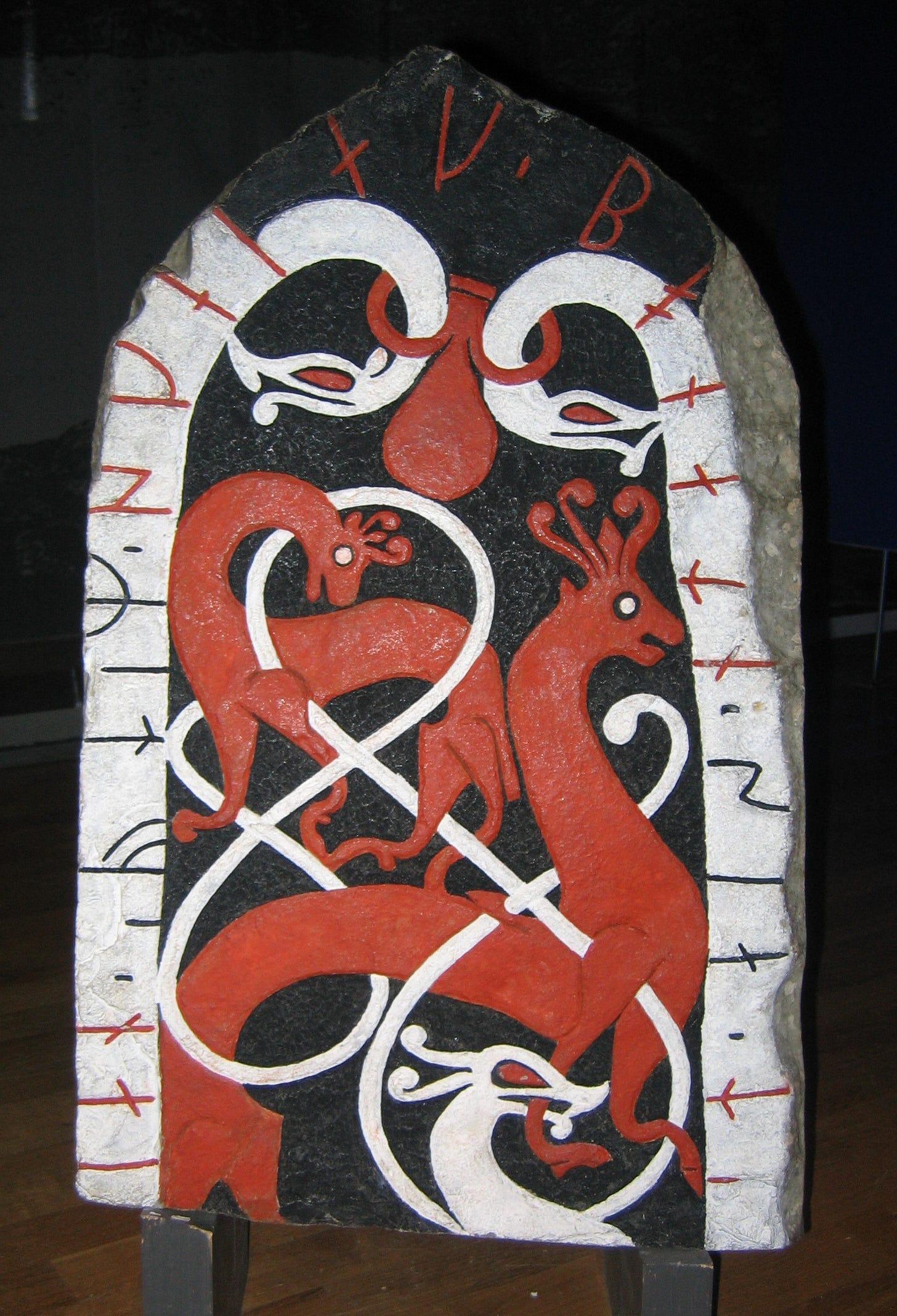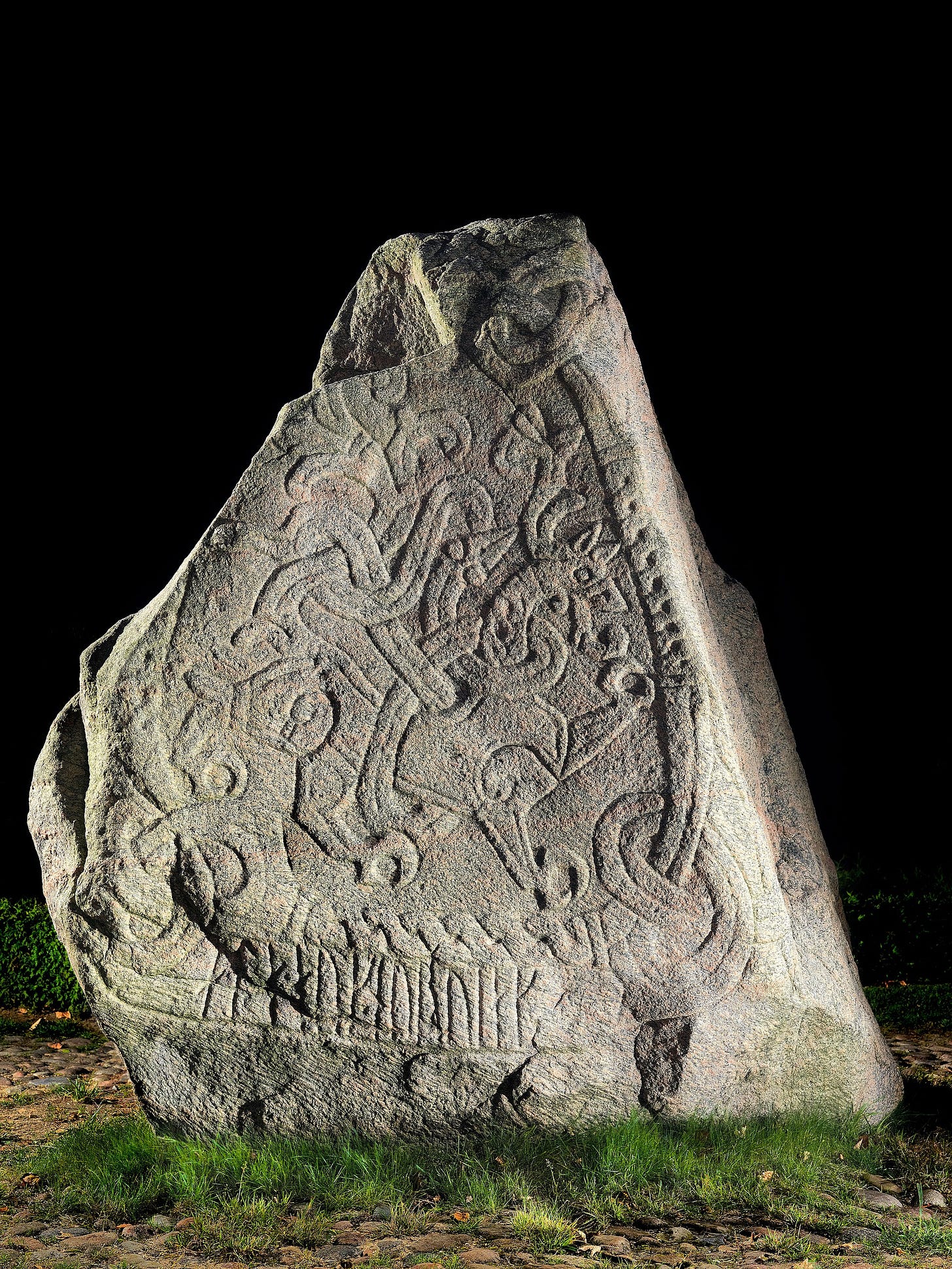(This is not a very extensive post; much more could be written on the topic. I may update it in the future.)
In the Old Germanic culture the hart or stag was a powerful symbol of the warring caste. Early examples are found from Anglo-Saxon England. The English king buried in the famous barrow at Sutton (the Sutton Hoo) in the 7th century had in his burial chamber a sceptre (sometimes called a whetstone) mounted by a proud stag. In the 8th century poem Beowulf the legendary Danish king Rothgar names his great mead hall Heorot, or “the Hart”. In a poem from the 10th century Exeter Book, the greatest Old English collection of poetry, the narrator calls himself Déor or ‘Deer’; see my translation.
Anglo-Saxon shrines were apparently also decorated with images of stags. The 7th century English Christian writer Aldhelm celebrates their destruction so:
ubi pridem eiusdem nefandae natricis ermula cervulusque cruda fanis colebantur stoliditate in profanis, versa vice discipulorum gurgustia, immo almae oraminum aedes architecti ingenio fabre conduntur.
‘where once the crude pillars of the same vile snake and stag in profane temples were foolishly worshipped, with the turning of the tide dwellings of students, nay, nourishing houses of oratory, are skilfully built by the genius of the archtitect.’
His mention of snakes and stags agrees rather well with later Scandinavian animal art, where snakes and stags are frequently depicting as fighting each other.
Let us turn to the Old Norse world. In the Heathen wisdom poem Grímnismǫ́l (‘the Speeches of Grimner’), Weden’s hall, Walhall, is said to have a stag standing on it:
Ęikþyrnir hęitir hjǫrtr, · es stęndr á hǫllu Hęrjafǫðrs
ok bítr af Lę́ráðs limum;
en af hans hornum · drýpr í Hvergęlmi,
þaðan ęigu vǫtn ǫll vega.
‘Oakthirner is the hart called, who stands on the hall of the Father of Hosts,
and bites from Leered’s branches.
And from his horns droplets fall into Wharyelmer,
thence all waters run their course.’Two fine descriptions of heroes, comparing them to stags, are found in Old Norse poetry. The Eddic poem Helgakviða Hundingsbana II (‘the Second Lay of Hallow Hundingsbane) tells the story of the life of Hallow (Hęlgi). After his death, his widow Syerun (Sigrún) eulogises him:
Svá bar Hęlgi · af hildingum
sem ítr-skapaðr · askr af þyrni
eða sá dýr-kalfr · dǫggu slunginn
es øfri fęrr · ǫllum dýrum,
ok horn glóa · við himin sjalfan.
‘So did Hallow surpass the princes
like the nobly shaped ash the thorn,
or the deer-calf, dew-besprinkled,
who fares higher than all beasts,
and his horns gleam against heaven itself.’A similar comparison is found in the heroic Guðrúnarkviða II (‘the Second Lay of Guthrun’), where Guthrun Yivick’s daughter (Guðrún Gjúkadóttir) laments the death of her husband Siward (Sigurðr) by the hands of her brothers:
Svá vas Sigurðr · of sonum Gjúka
sem vę́ri grǿnn laukr · ór grasi vaxinn
eða hjǫrtr hǫ́-bęinn · um hvǫssum dýrum
eða gull glóð-rautt · af grǫ́u silfri.
‘So was Siward over the sons of Yivick,
like were a green leek out of grass grown,
or a hart, high-legged, amidst coarse beasts,
or gold, glowing-red, beside grey silver.’
In his youth Siward killed the dragon Fathomer (Fáfnir), an episode which was very famous in the Wiking age. The slaying is told in the Eddic Fáfnismǫ́l (‘the Speeches of Fathomer’). After being dealt the dying blow, Fathomer asks Siward, his slayer, for his name. Siward answers:
Gǫfugt dýr ek hęiti · en ek gęngit hęf’k
inn móður-lausi mǫgr,
fǫður ek á’kk-a · sem fira synir,
gęng ek ęinn saman.
‘Noble Deer am I called, and I have gone
a motherless lad.
A father I have not, like the sons of men;
I go all alone.’





